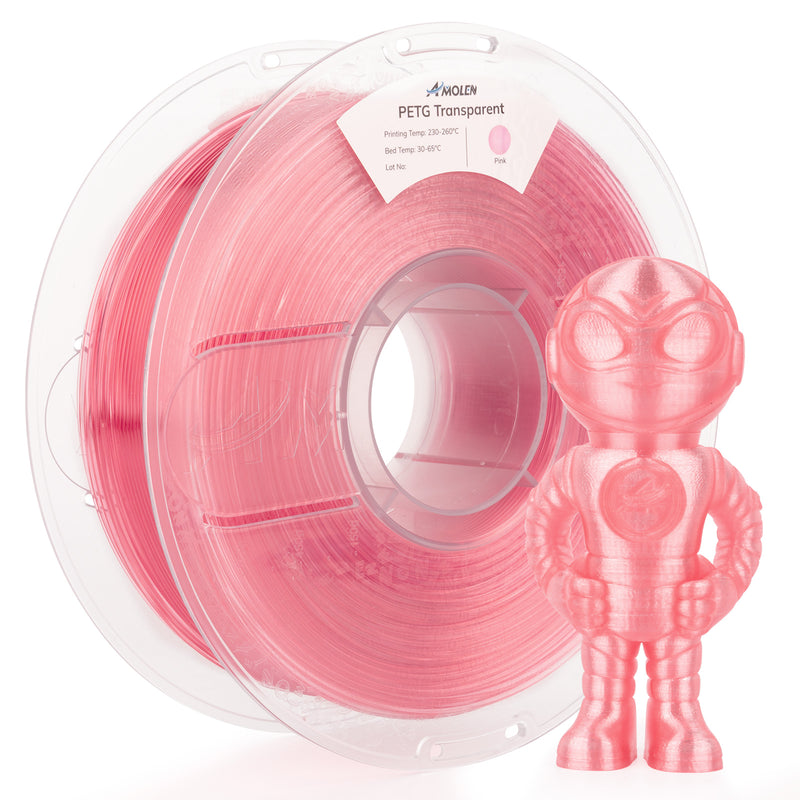Unveiling the Ultimate Showdown: PLA vs. PETG Filament – Which One Will Elevate Your 3D Printing Game?
When it comes to 3D printing, the choice of filament can significantly impact the quality and durability of your prints. Among the myriad of options available, PLA (Polylactic Acid) and PETG (Polyethylene Terephthalate Glycol) have emerged as two of the most popular filaments in the 3D printing community. Each has its unique set of characteristics that make it suitable for different applications, but which one should you choose for your next project? This article aims to provide a comprehensive comparison of PLA and PETG filaments, helping you make an informed decision based on your specific needs and preferences.

Understanding PLA and PETG Filaments
PLA, or Polylactic Acid, is a biodegradable thermoplastic derived from renewable resources like cornstarch or sugarcane. Its low melting temperature and ease of use have made it a favorite among beginners and hobbyists. PLA is known for its vibrant colors and smooth finish, making it ideal for aesthetic prints such as figurines, prototypes, and decorative items. On the other hand, PETG, which stands for Polyethylene Terephthalate Glycol, is a more robust filament that offers greater durability. It is resistant to impact and heat, making it suitable for functional parts and projects that require strength and resilience. Both filaments have carved out their niches within the 3D printing landscape, but understanding their chemical properties and applications can help you choose the right one for your project.
Comparative Analysis: PLA vs. PETG
Strength and Durability
When it comes to strength and durability, PETG takes the lead over PLA. While PLA has a higher tensile strength, meaning it can withstand more force before breaking, PETG is known for its superior impact resistance. This makes PETG a better choice for applications where the printed object is likely to experience stress or impact. For instance, a friend of mine recently printed some mechanical parts using PETG, and they held up exceptionally well under pressure, whereas a previous PLA print for a similar application cracked after a short period of use. Therefore, if your project demands longevity and resilience, PETG will likely serve you better.
Ease of Printing
In terms of printability, PLA is often regarded as the easier filament to work with. It prints at lower temperatures, typically around 180°C to 220°C, and has excellent bed adhesion, which minimizes the risk of warping. This makes it an excellent choice for beginners or those who do not want to deal with the complexities of adjusting printer settings. Conversely, PETG requires higher printing temperatures, usually between 220°C and 250°C, and has a tendency to string, which can be frustrating for some users. However, with the right settings and care, many experienced users find that PETG can produce stunning, high-quality prints that are worth the extra effort.
Post-Processing Capabilities
When it comes to post-processing, both PLA and PETG have their strengths and weaknesses. PLA is relatively easy to sand and paint, allowing for a variety of finishing options. It adheres well to glues, making it a great choice for assembling multi-part prints. In contrast, PETG can be more challenging to paint and glue due to its smooth surface and flexibility. However, it can be polished to a glossy finish, which some users prefer for certain applications. In my experience, while PLA is straightforward for creating intricate details and vibrant colors, PETG’s durability means it can withstand wear and tear better, making it an excellent choice for functional items.
Environmental Impact
From an environmental perspective, PLA has the upper hand as it is derived from renewable resources and is biodegradable under industrial composting conditions. This means that if disposed of correctly, PLA can break down more easily than many other plastics. PETG, on the other hand, is recyclable, but its production process involves fossil fuels, which raises concerns about its overall sustainability. While my friends who are environmentally conscious often lean toward PLA for their projects, those focused on durability and functionality tend to opt for PETG, recognizing the trade-offs involved.
Practical Applications
Choosing between PLA and PETG often comes down to the specific requirements of your project. For instance, PLA is ideal for creating prototypes, decorative models, and educational tools due to its ease of use and vibrant finish. It is also a great choice for indoor applications where durability is not a primary concern. Conversely, PETG excels in producing functional parts, mechanical components, and items that may be exposed to stress or varying temperatures, such as outdoor fixtures or tools. A friend of mine created an outdoor planter using PETG, and it has proven to be incredibly resilient against the elements, whereas a similar PLA planter I made last summer has shown signs of wear and fading.
Final Thoughts on Choosing Between PLA and PETG
In conclusion, both PLA and PETG filaments have their unique advantages and drawbacks, making them suitable for different applications. PLA is an excellent choice for beginners and those focused on aesthetic quality, while PETG offers superior strength and durability for more demanding projects. Ultimately, the decision between PLA and PETG should be based on your specific needs, project requirements, and personal preferences. By considering the factors discussed in this article, you can make an informed decision that will elevate your 3D printing game and lead to successful, satisfying results.







